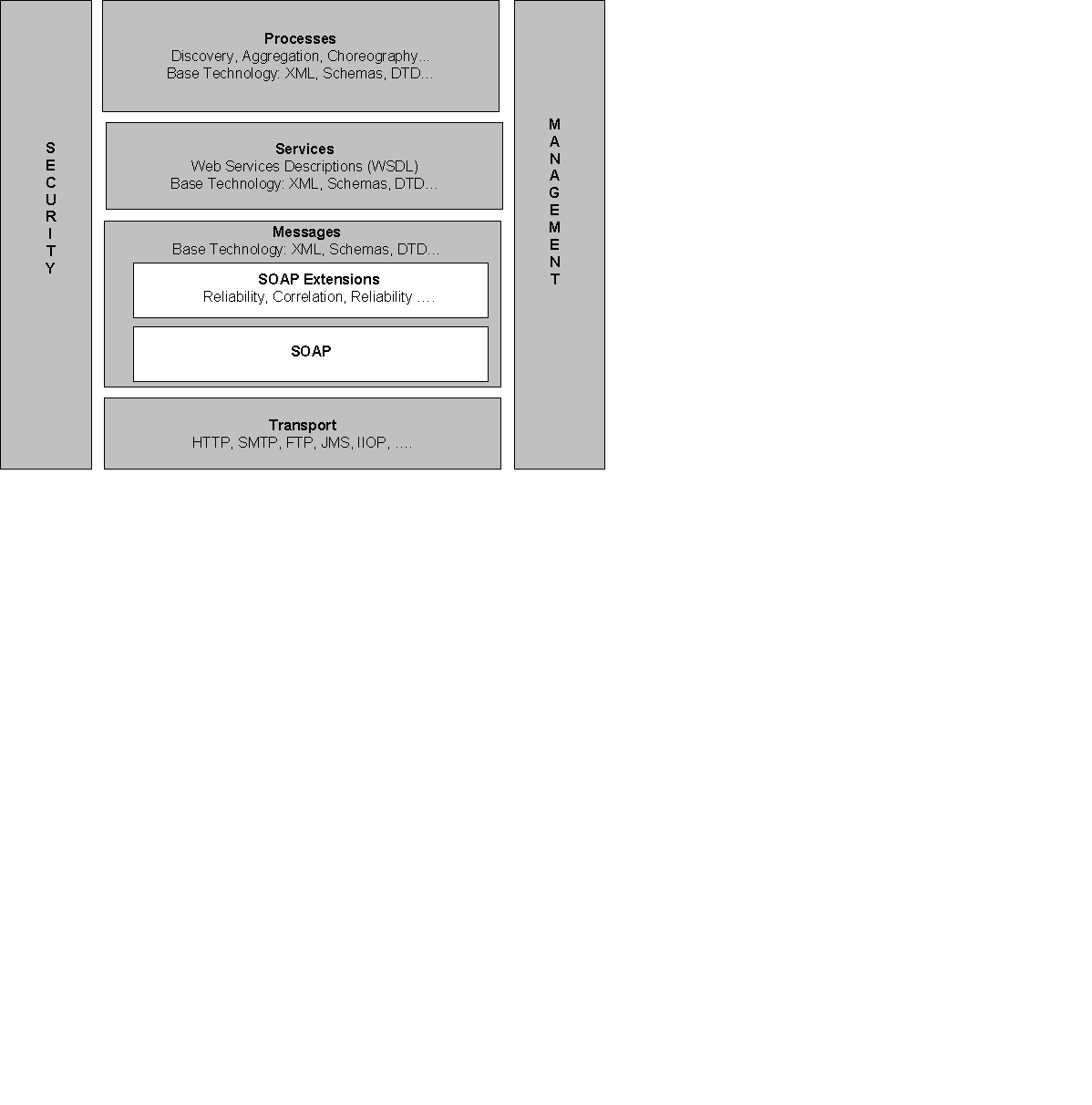- From: George Blanck <gsblanck@nyc.rr.com>
- Date: Tue, 8 Apr 2003 11:08:21 -0400
- To: "Anne Thomas Manes" <anne@manes.net>, <www-ws-arch@w3.org>
- Message-ID: <HIEDINPJIKAJOGNFAGCKMEFNCEAA.gsblanck@nyc.rr.com>
<snip> A stack diagram implies a layered design pattern (think OSI stack), which indicates that the layer on top calls the layer below to further the process. It's a runtime processing diagram. It seems to me that we're trying to convey too much information in this stack diagram. (combining runtime processing with other things) </snip> I believe that you are correct in concluding the multiple purposes behind the WSA stack diagram but the statement about the use of a stack diagram as runtime relationships is not necessarily true. The key message behind the WSA stack may not be "runtime" but "definitional" relationships. There will be several/many runtime variations of how these components are employed but generally within these same structural relationships. But I would start with four boxes and the two pillars very much like Hugo's diagram: Label for Box 1. "Processes" (rather than aggregation); Content: "Examples: Discovery, Aggregation, Choreography..." Label for Box 2. "Services" (rather than description) Content: WSDL Service Descriptions Label for Box 3. "Messages" include two boxes within Box 3a "SOAP Extensions" Box 3b: "SOAP" label for Box 4. "Transport" Content: "HTTP, SMTP, JMS..." Pillar A: "Security" Pillar B: "Management" Base technology of 1-3 is XML shown either as a backplane or just included explicitly inside each box as "Base Technology: XML". We do like to "factor" XML out separately but I don't think it would offend if it where just spelled out within each box but a back plane is more expressive. I have included an example below. George Blanck gsblanck@nyc.rr.com x$0 Associates - System Architecture and Design
Attachments
- image/gif attachment: WSA_Stack.gif

- application/vnd.ms-powerpoint attachment: WSA_STACK.ppt
Received on Tuesday, 8 April 2003 11:13:35 UTC